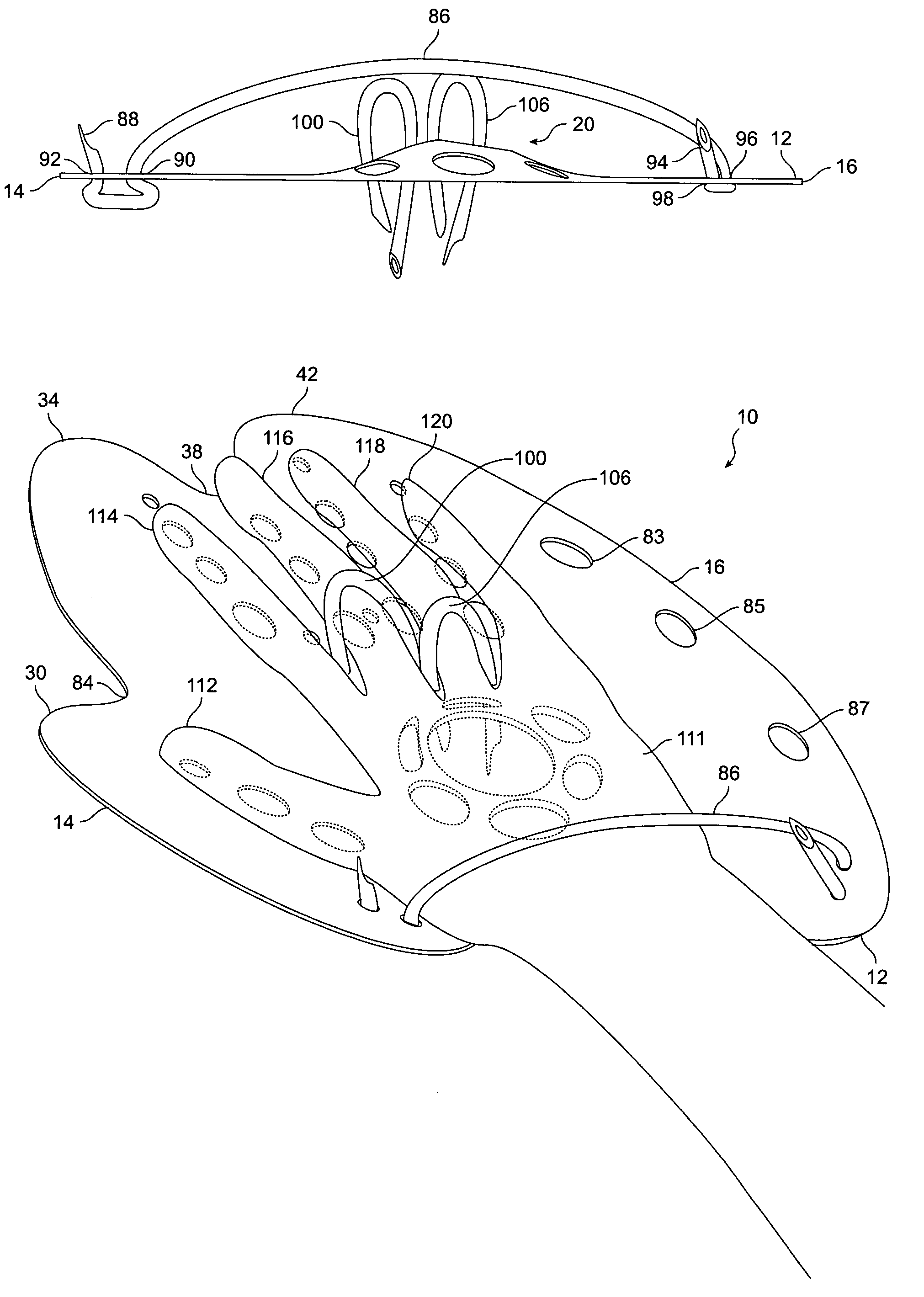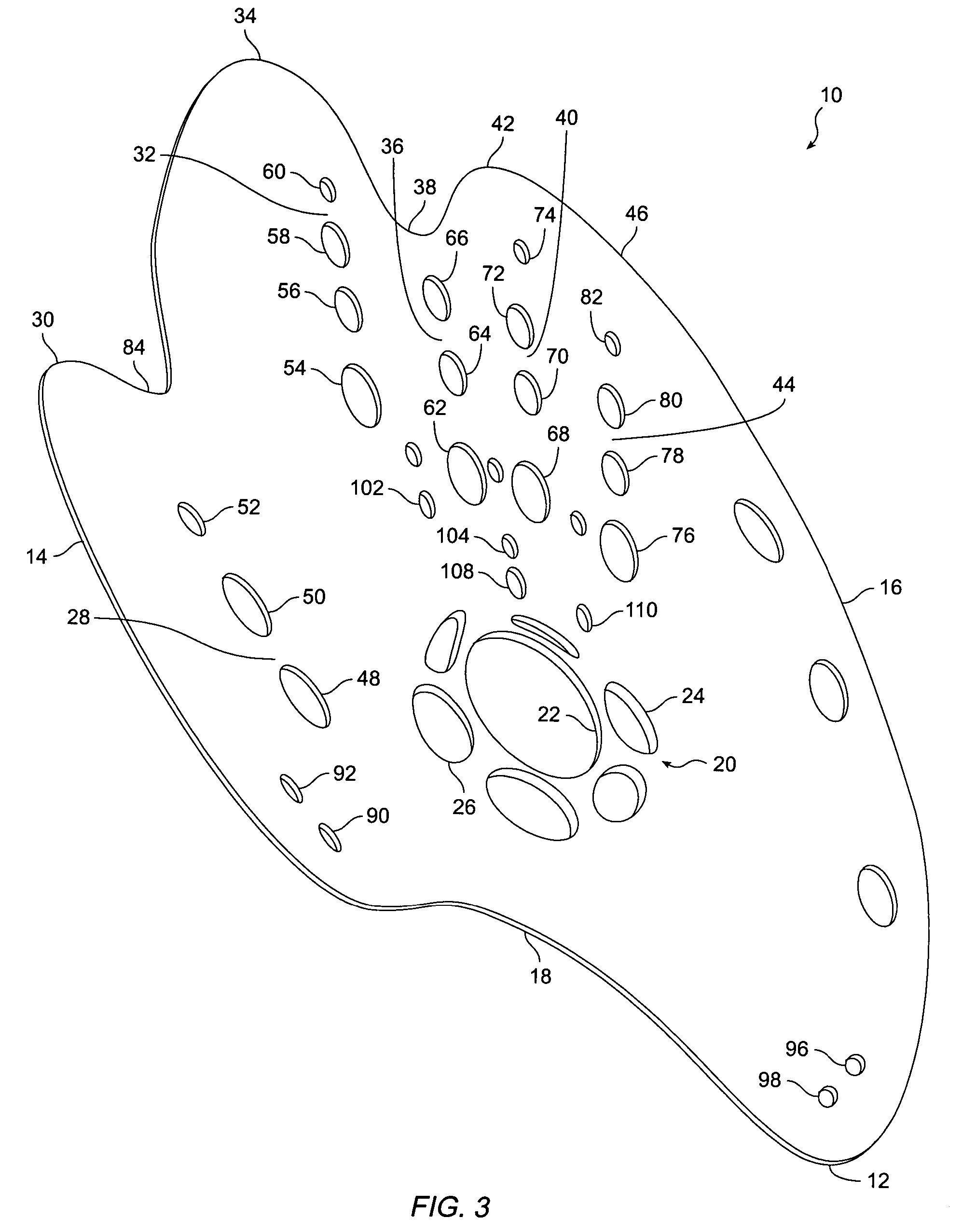Swimmer training paddle simulating shape of human hand
a training paddle and human hand technology, applied in swimming aids, swimming fins, swimming, etc., can solve the problems of increasing the risk of shoulder injury, increasing the difficulty of user "catching" the water, and creating an unnatural stroke motion in the user's stroke, so as to increase stabilize the paddle, and enhance the swimmer's feel of the water
- Summary
- Abstract
- Description
- Claims
- Application Information
AI Technical Summary
Benefits of technology
Problems solved by technology
Method used
Image
Examples
Embodiment Construction
[0026]FIGS. 1–3 illustrate a swimming paddle 10 constructed in accordance with the preferred embodiment of the present invention. Swimming paddle 10 is designed to be worn on the right hand of the swimmer. Those skilled in the art will realize that such swimming paddles are typically sold in pairs, and that the swimming paddle for the swimmer's left hand will be a mirror image of swimming paddle 10.
[0027]Swimming paddle 10 is formed from a generally planar member 12. In the preferred embodiment, member 12 is formed of polyvinyl chloride (PVC) foam which may be either injection-molded or deformed thermally from PVC foam sheet material. Member 12 is preferably approximately 1 / 16 to 3 / 16 inch thick, depending upon the material used. This thickness provides sufficient resiliency to enhance the swimmer's feel for the water, while being sufficiently rigid to avoid collapse under typical training conditions. Member 12 includes a first side peripheral edge 14 and an opposing second side per...
PUM
 Login to View More
Login to View More Abstract
Description
Claims
Application Information
 Login to View More
Login to View More - R&D
- Intellectual Property
- Life Sciences
- Materials
- Tech Scout
- Unparalleled Data Quality
- Higher Quality Content
- 60% Fewer Hallucinations
Browse by: Latest US Patents, China's latest patents, Technical Efficacy Thesaurus, Application Domain, Technology Topic, Popular Technical Reports.
© 2025 PatSnap. All rights reserved.Legal|Privacy policy|Modern Slavery Act Transparency Statement|Sitemap|About US| Contact US: help@patsnap.com



